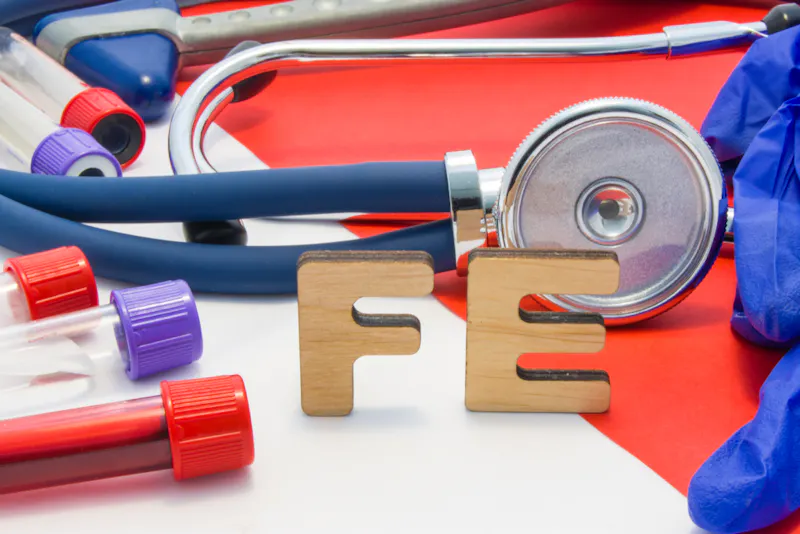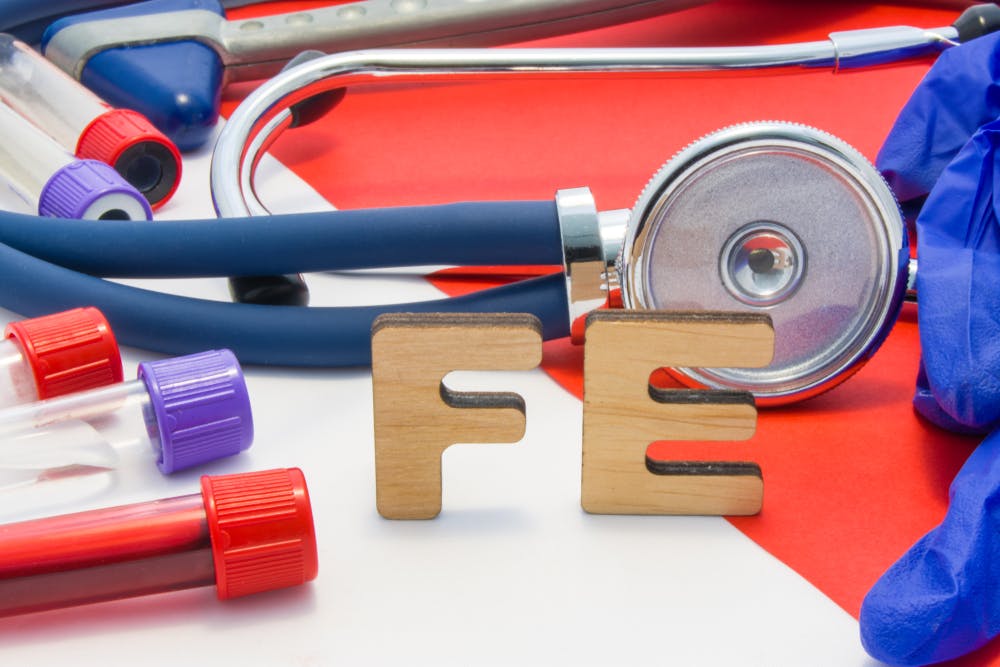Haemochromatosis (iron overload)
What's covered?



Haemochromatosis is the name of a condition where your body absorbs and stores too much iron from your diet. While iron is essential for your health, high levels can lead to significant health problems if left untreated for many years. An iron blood test can help you diagnose and manage the condition. While it can’t be cured, there are effective treatments to manage it.
What is iron?
Iron is a nutrient that helps transport oxygen around your body. It does this by forming an important part of haemoglobin — a protein in your red blood cells — that carries oxygen to all your vital organs.
When your iron levels are too low, your red blood cells can’t properly deliver oxygen around your body. But if your iron levels are too high, this can also be dangerous for your body. Too much iron has a toxic effect on your organs and can cause damage.

What is haemochromatosis?
Haemochromatosis is a condition that’s usually inherited — when you get genes from your parents that increase your risk of developing a certain condition. It causes iron to build up slowly in your body.
If not treated, iron can build up in parts of your body — like your liver, joints, and heart — and subsequently, cause damage. But early diagnosis and treatment can slow down or reverse potential damage.
What causes haemochromatosis?
There are two main types of haemochromatosis.
Primary haemochromatosis
Also called hereditary or classical haemochromatosis, this is caused by inheriting genes that cause you to absorb too much iron from food. Only a small number of people who inherit these genes will actually develop this condition.
Secondary haemochromatosis
Caused by medical treatments or non-genetic medical conditions, like:
- conditions where repeated blood transfusions are needed (eg sickle cell disease or thalassaemia)
- excess intake of iron supplements or injections
- kidney dialysis over a long period of time
- liver disease — like hepatitis C or fatty liver disease
- other inflammatory conditions — like rheumatoid arthritis
Symptoms of too much iron in your blood
Signs and symptoms of haemochromatosis differ for everyone. Some people with high levels of iron have no symptoms at all, while others can experience serious symptoms.
Symptoms of haemochromatosis usually start later in life. Males tend to develop symptoms around the age of 40, while females are usually after menopause as monthly blood loss from periods has a protective effect.
Common early symptoms are vague and include:
- fatigue
- weight loss
- weakness
- joint pain
- irregular or absent periods
- erectile dysfunction
- skin discolouration and darkening
If the condition is undiagnosed or left untreated, the build-up of iron in your organs can lead to liver problems, diabetes, and heart failure.
How to diagnose haemochromatosis
Haemochromatosis can be diagnosed through several types of blood tests. If it runs in your family, your GP can do an iron blood test to check if you have it.
An iron blood test will measure your:
- iron levels — the amount of free iron in your blood
- transferrin saturation level — the amount of iron bound to transferrin, a protein that transports iron around your body
- ferritin level — the amount of iron stored in your body
All these levels will be high when you have haemochromatosis.
In contrast, other measured levels in an iron blood test will be low in haemochromatosis:
- transferrin — a protein that transports iron around your body
- total iron-binding capacity — how much spare ‘capacity’ your blood proteins have for binding iron
Further blood tests will check for:
- a faulty gene linked to haemochromatosis
- any other conditions that can cause high iron levels
- your liver function and to identify any liver conditions
When to see a GP for haemochromatosis
See a GP about getting tested if you have:
- any persistent symptoms that could be haemochromatosis — a GP will rule out any other causes before doing further blood tests.
- a parent or sibling diagnosed with haemochromatosis — even if you don’t show any symptoms, you could also develop the condition.
Treatment for haemochromatosis
There’s no cure for haemochromatosis, but there are treatments that can reduce the amount of iron in your body
The NHS recommends two treatment options:
- phlebotomy — a procedure where some of your blood is removed and the amount of iron in your body is reduced
- chelation therapy — where medication is used to reduce the amount of iron in your blood
While you don’t have to make changes to your diet while undergoing treatment, it’s recommended that you avoid:
- excess alcohol, as this can worsen liver damage caused by iron overload and can sometimes increase iron absorption
- cereals or other food products with added iron
- red meat and offal (liver or kidneys) as these are rich in iron
- iron or vitamin C supplements, as vitamin C increases your body’ ability to absorb iron and can be toxic in iron overload
If haemochromatosis is diagnosed and treated early enough, you can avoid significant health problems. You can also regularly monitor your condition with a home iron blood test.
National Health Services (2019). Haemochromatosis. Retrieved 11 October 2021 from https://www.nhs.uk/conditions/haemochromatosis/
Powell, L. W., Seckington, R. C., & Deugnier, Y. (2016). Haemochromatosis. The Lancet, 388(10045), 706-716.